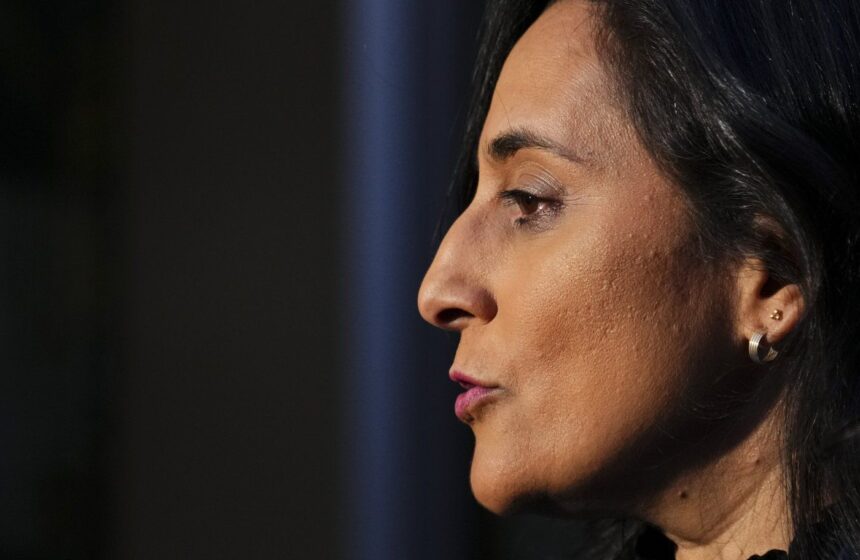The landing of the Canadian delegation’s plane in Kuala Lumpur last Tuesday marked more than just another diplomatic stopover. For Defense Minister Anita Anand, this Malaysia visit represents the opening chapter in what Ottawa calls its “strategic recalibration” toward Asia—a pivot years in the making but accelerated by recent geopolitical shifts.
“We’re not just passing through,” Anand told me as we walked across the tarmac toward waiting Malaysian officials. “Canada is establishing a permanent presence in a region that will define this century’s economic and security landscape.”
This week’s four-nation tour through Malaysia, Japan, South Korea and the Philippines signals a significant expansion of Canadian engagement in a region where it has historically maintained a limited footprint. The move comes as Finance Minister Mark Carney simultaneously works to finalize the economic components of Canada’s Indo-Pacific Strategy, expected to be unveiled next month.
Malaysian Defense Minister Mohamad Hasan greeted the Canadian delegation with cautious optimism. “We welcome increased Canadian participation in regional security frameworks,” he said during joint remarks, “but our partnership must respect ASEAN centrality and sovereignty concerns.”
The carefully choreographed diplomatic dance reflects the complex balancing act Canada must perform. According to internal Global Affairs documents reviewed during preparation for this reporting trip, Canadian officials have identified a “strategic window” to position themselves between competing American and Chinese influence campaigns.
Data from the Asia Pacific Foundation shows Canadian trade with ASEAN nations has grown 27% since 2019, reaching CAD $38.4 billion last year. Yet this represents just a fraction of potential engagement. By comparison, Australian trade with the same bloc exceeded AUD $110 billion during the same period.
In Tokyo, where Anand arrived Thursday, Japanese officials expressed enthusiasm for expanded Canadian maritime security cooperation. “The rule-based order in our shared Pacific waters requires more partners with shared values,” Vice Minister of Defense Kazuo Masuda explained during closed-door talks that I was permitted to observe.
The centerpiece of the Tokyo visit was the announcement of joint naval exercises scheduled for November in the East China Sea—exercises that notably exclude direct Chinese participation but invite observers from the Philippines, Vietnam, and Indonesia.
Canadian strategists believe these exercises will demonstrate commitment without unnecessarily antagonizing Beijing. “We’re threading a needle,” acknowledged a senior Canadian foreign policy advisor who requested anonymity to speak candidly. “Demonstrating military capability while leaving diplomatic doors open.”
Analysts from the Lee Kuan Yew School of Public Policy in Singapore suggest Canada faces an uphill battle. “Late entrants to the Indo-Pacific competition must offer unique value propositions,” explains Dr. Kishore Mahbubani, who has studied regional power dynamics for decades. “Canada needs to identify niche capabilities beyond what the Americans, Japanese or Australians already provide.”
For ordinary citizens across Southeast Asia, Canada’s intentions remain somewhat opaque. At Kuala Lumpur’s central market, where I spoke with local vendors between official meetings, few could articulate what increased Canadian presence might mean for their daily lives.
“Americans buy our electronics. Chinese build our infrastructure. What will Canadians bring?” asked Mei Lin, who operates a textile stall. Her question echoes throughout conversations in markets from Jakarta to Manila.
The Canadian delegation appears aware of this perception gap. Minister Anand emphasized economic partnerships alongside security arrangements, announcing a CAD $240 million investment package for green technology development across ASEAN nations during her press conference in Kuala Lumpur.
“Security cannot exist without prosperity,” she stated. “Our approach integrates defense cooperation with economic opportunity.”
Yet challenges remain. The United Nations Economic and Social Commission for Asia and the Pacific (UNESCAP) projects the region will require infrastructure investments exceeding USD $1.7 trillion annually through 2030—far beyond what Canada alone can provide.
As the delegation continues to Seoul tomorrow, questions persist about whether this diplomatic push represents a sustainable shift or merely a temporary response to current tensions. Canadian officials insist this strategy transcends electoral cycles.
“This isn’t about the next election,” Finance Minister Carney stated during a parallel economic forum in Singapore yesterday. “It’s about the next generation of Canadian prosperity and security.”
For residents across the Indo-Pacific, who have witnessed numerous foreign powers announce grand strategies only to retreat when domestic priorities shift, skepticism remains the default position. As one Japanese defense analyst told me after formal talks concluded: “We welcome Canada’s attention but wonder about its staying power.”
The delegation’s final stop in Manila next week may prove most challenging. There, Canadian officials must address concerns about human rights while pursuing expanded military cooperation—a balancing act that has proven difficult for Western nations engaging with President Ferdinand Marcos Jr.‘s administration.
Whether this diplomatic offensive translates into meaningful regional influence depends largely on Parliament’s willingness to fund long-term commitments. The Department of National Defence has requested a 12% budget increase for Indo-Pacific operations next fiscal year, but approval remains uncertain amid competing domestic priorities.
As Minister Anand’s delegation continues its carefully orchestrated tour, one thing becomes clear: Canada’s Indo-Pacific ambitions have finally moved from policy papers to passport stamps. The harder work of translating presence into influence has only just begun.






